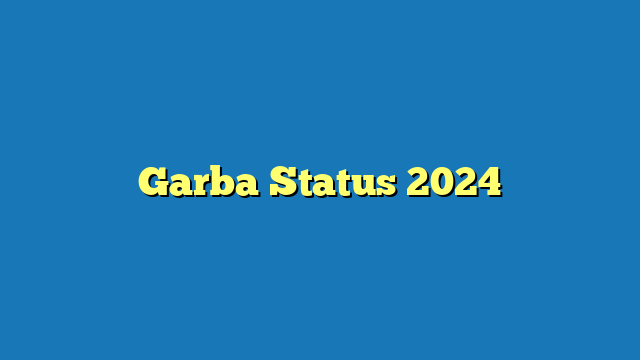Garba: A Vibrant Gujarati Folk Dance
Garba is a vibrant and energetic folk dance originating from the western Indian state of Gujarat. It is typically performed during the nine-night festival of Navratri, which celebrates the victory of good over evil and honors the Hindu goddess Durga. Garba is not only a dance form but also a social and cultural event that brings communities together to celebrate and have fun.
Historical Origins and Significance
The origins of Garba can be traced back to ancient times, with some historians believing it may have evolved from a ritual dance performed to ward off evil spirits. The dance is said to imitate the movements of Goddess Durga during her battle with the demon Mahishasura. Traditionally, Garba was performed exclusively by women, who would gather in circles and clap their hands rhythmically while dancing. Over time, men also began to participate in Garba, and the dance became a symbol of unity and community.
Performance and Styles
Garba is characterized by its fast-paced rhythm and repetitive steps. The dancers form a circle and move clockwise, clapping their hands and performing synchronized footwork. The steps are relatively simple, allowing people of all ages and skill levels to participate. The dance is often accompanied by traditional Gujarati folk music, played on instruments such as the dhol (drum), harmonium, and shehnai (oboe).
There are various styles of Garba, each with its own unique variations and interpretations. Some of the most popular styles include:
- Traditional Garba: The original form of Garba, performed exclusively by women in a circular formation.
- Raas Garba: A more energetic and dynamic style where men join the women in the dance, forming two concentric circles.
- Siddhi Dham Garba: A devotional style of Garba performed in honor of the goddess Siddhi.
- Dandiya Raas: A variation where dancers use colorful sticks called dandiyas to create rhythmic beats.
Costumes and Accessories
Garba dancers typically wear vibrant and colorful traditional costumes. Women often wear colorful chaniya cholis (long skirts and blouses) adorned with intricate embroidery and mirror work. Men wear kediya (shirts) and dhoti (loincloths) in bright colors. Both men and women accessorize with jewelry, such as necklaces, earrings, and bangles.
Dancers also use various accessories to enhance the performance. These include:
- Dandiyas: Colorful sticks used in Dandiya Raas, creating rhythmic beats as they are struck together.
- Chaniya cholis: Traditional skirts and blouses worn by women.
- Turbans: Headwear worn by men.
- Jewelry: Necklaces, earrings, and bangles.
Social and Cultural Significance
Garba is more than just a dance; it is a social and cultural event that brings communities together. During Navratri, people of all ages and backgrounds gather to participate in Garba, fostering a sense of unity and belonging. The dance provides an opportunity for people to socialize, make new friends, and celebrate the festive spirit.
Garba also plays a significant role in promoting Gujarati culture and tradition. It is performed at various cultural events, festivals, and weddings, showcasing the state’s rich heritage. The dance has gained popularity beyond Gujarat and is now enjoyed by people from all over India and abroad.
Conclusion
Garba is a vibrant and captivating folk dance that embodies the spirit of Gujarat. Rooted in ancient traditions and infused with energetic rhythms and colorful costumes, Garba has evolved into a significant social and cultural event. It brings communities together during Navratri, fostering unity, celebration, and a deep connection to Gujarati heritage.



